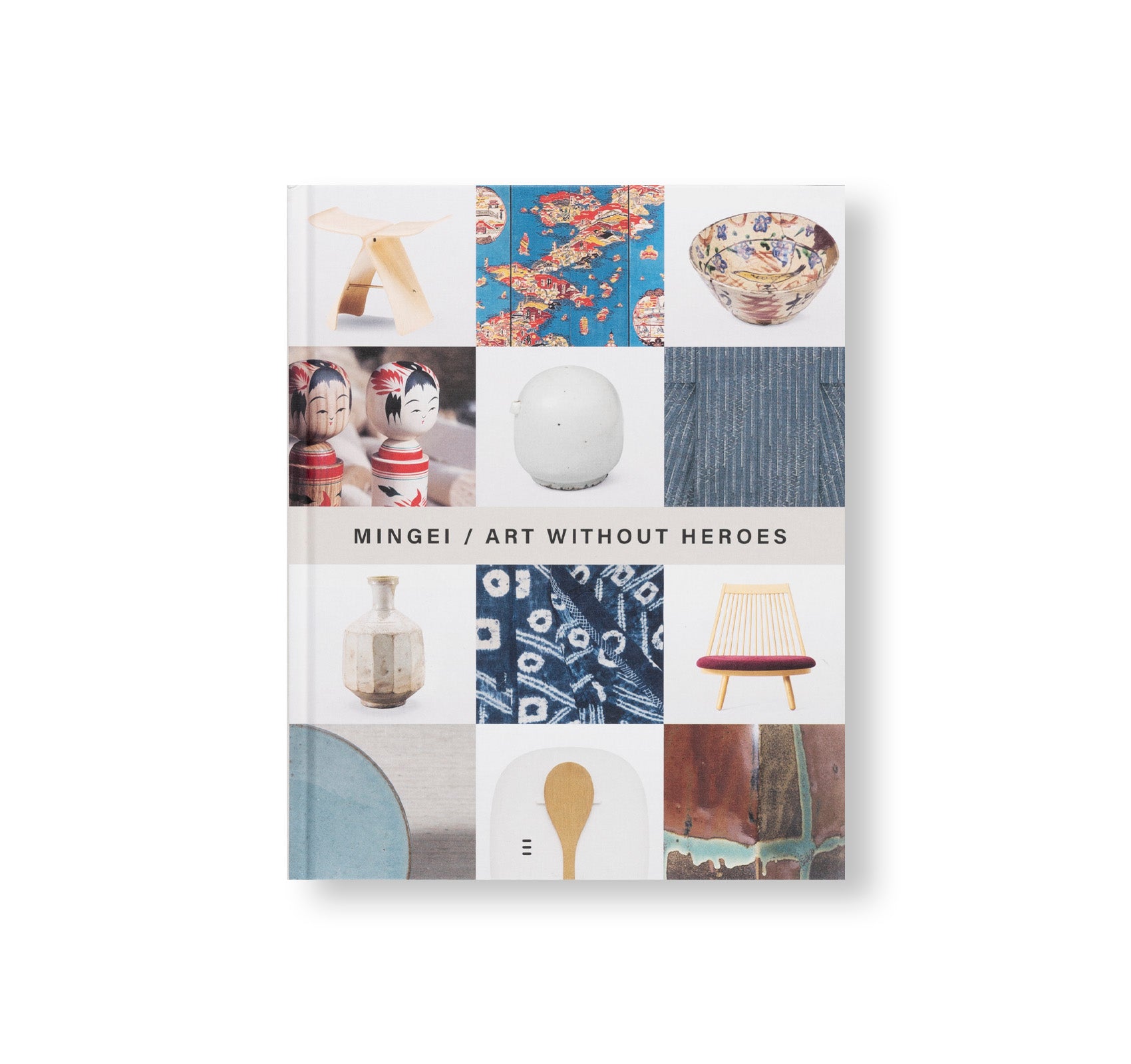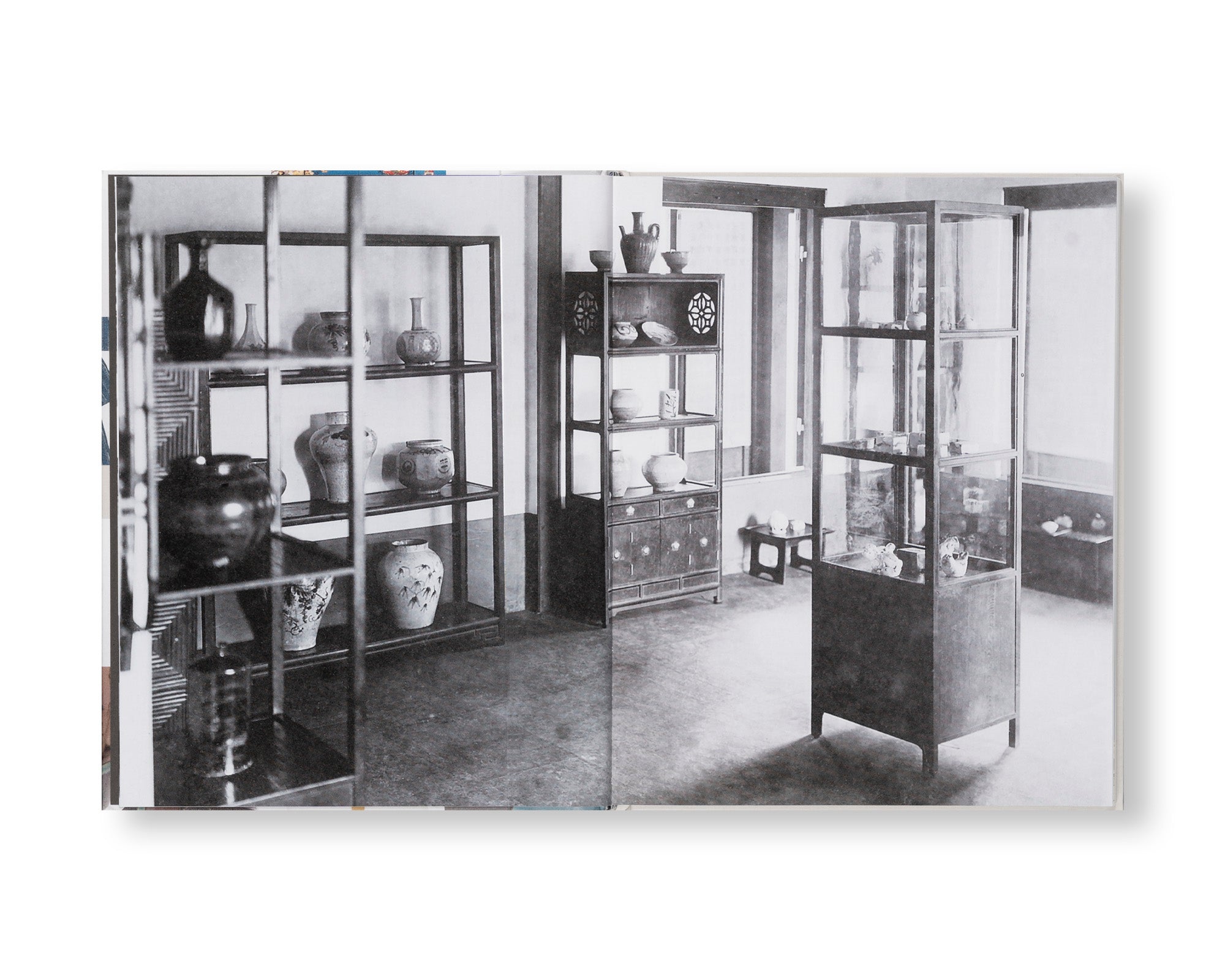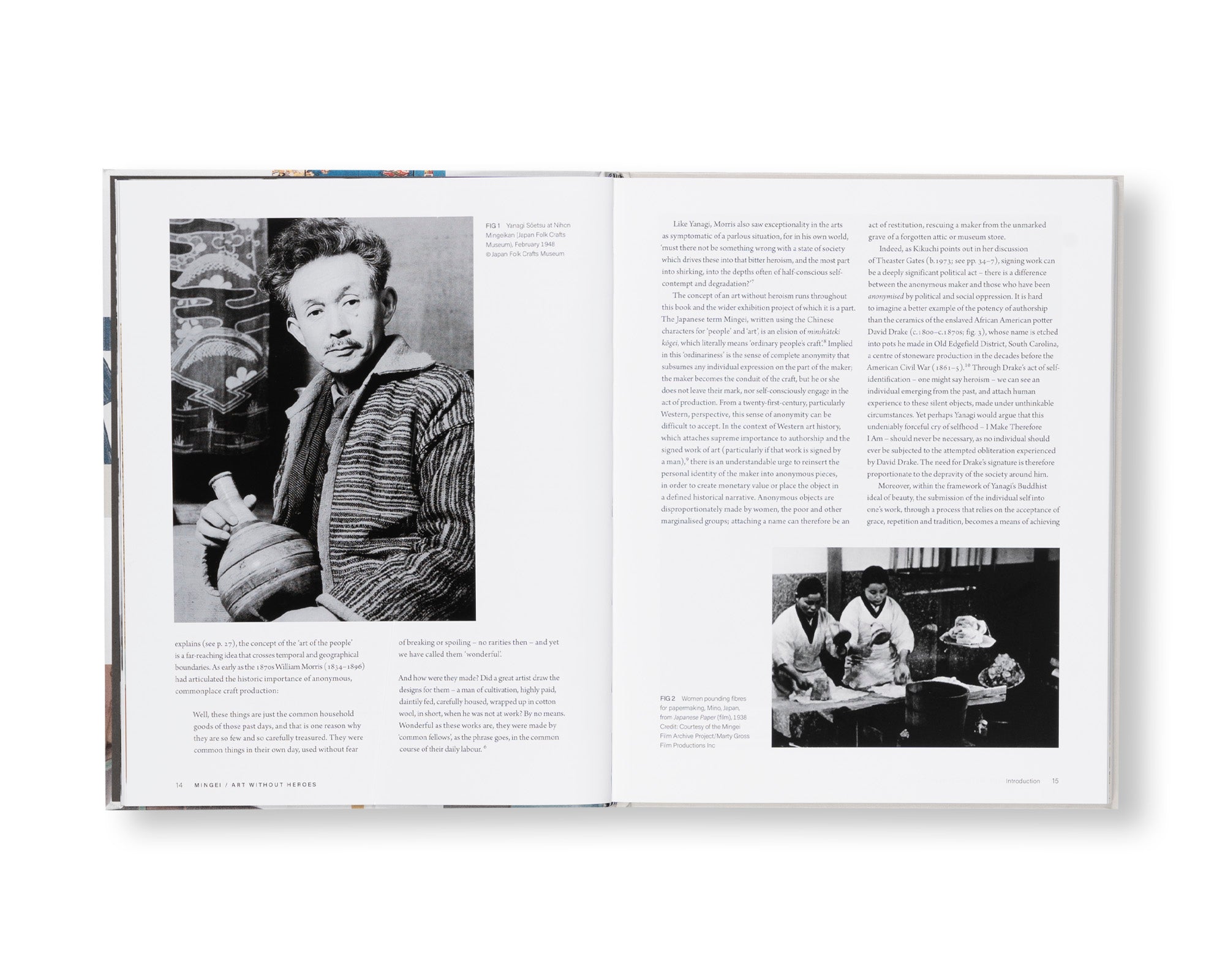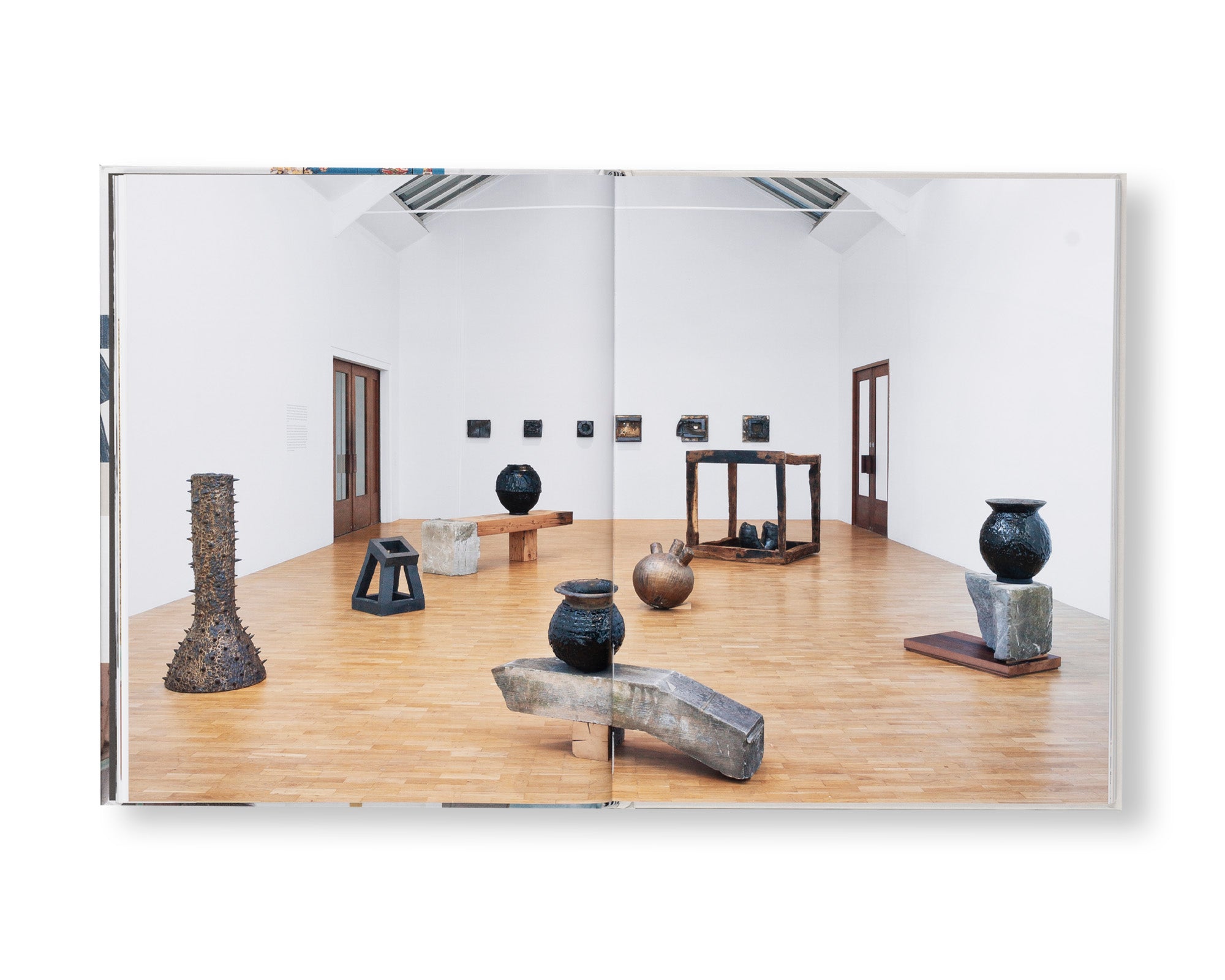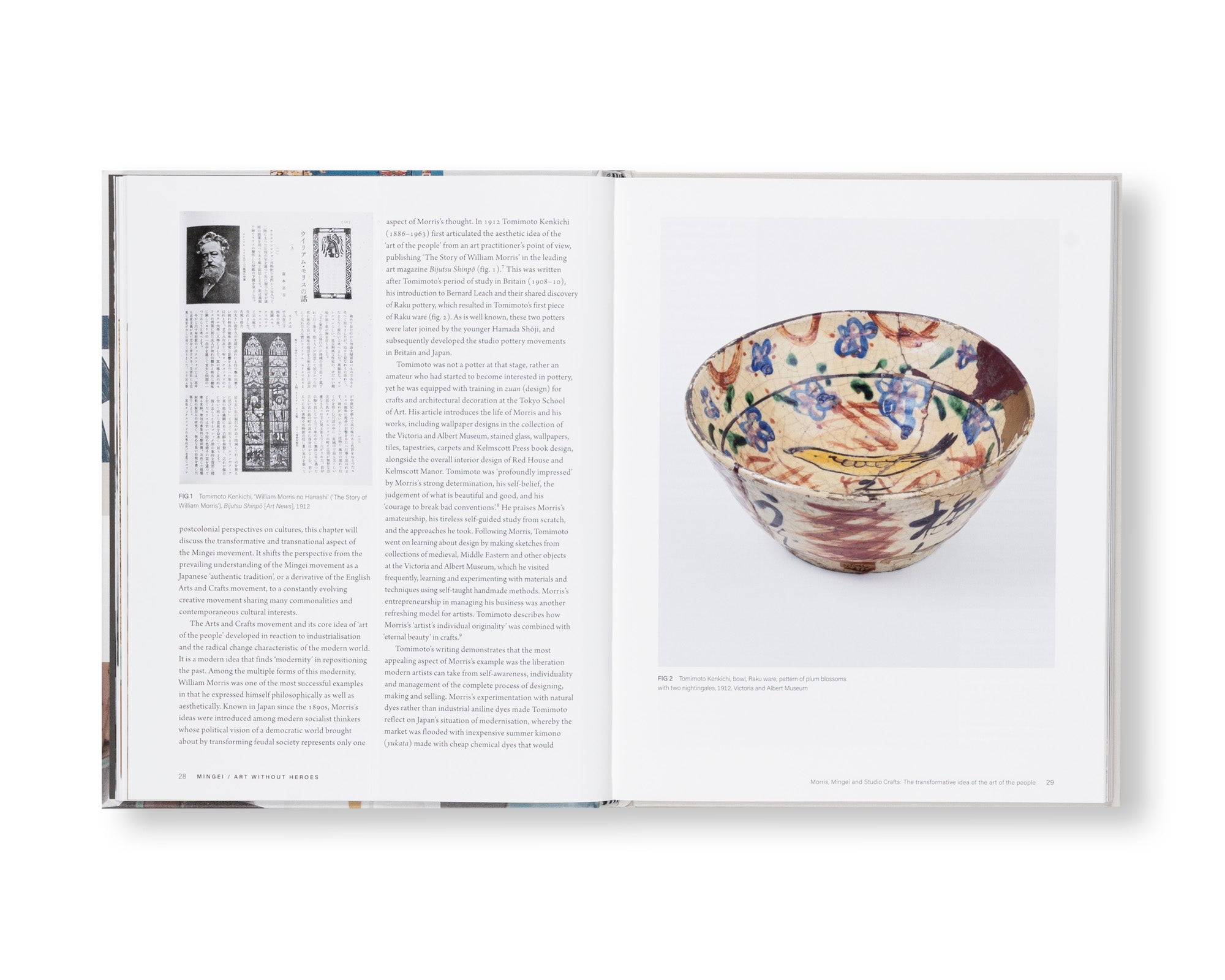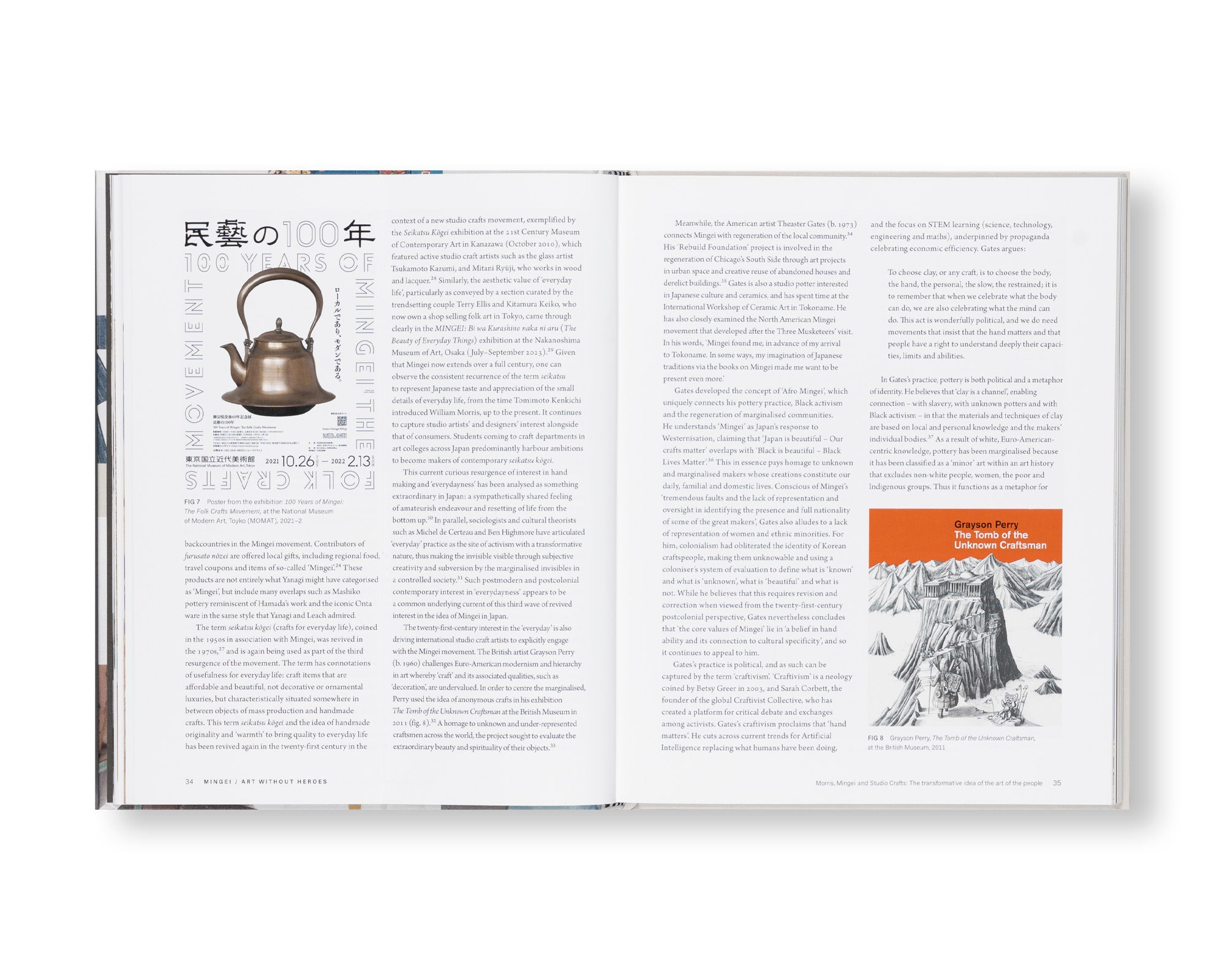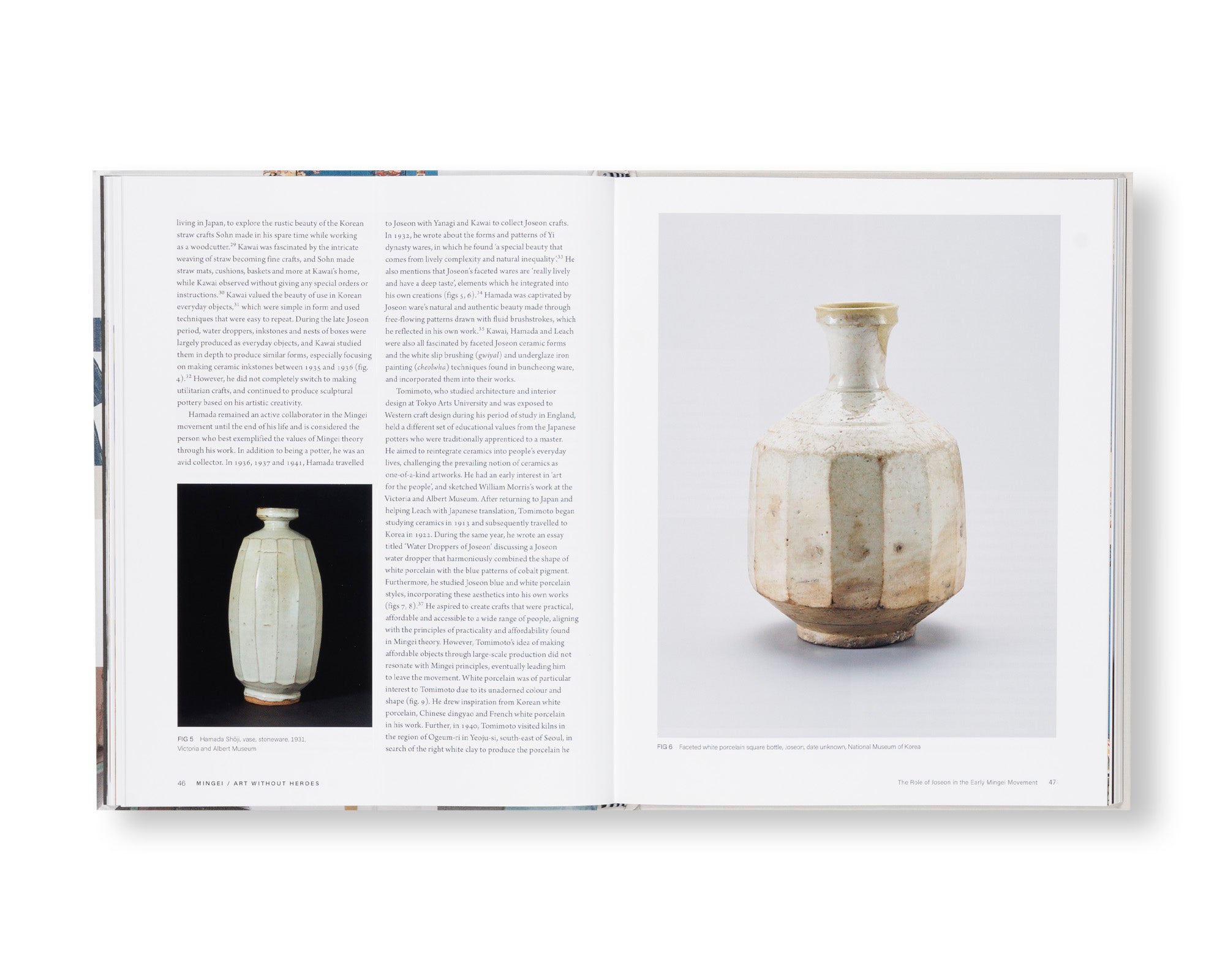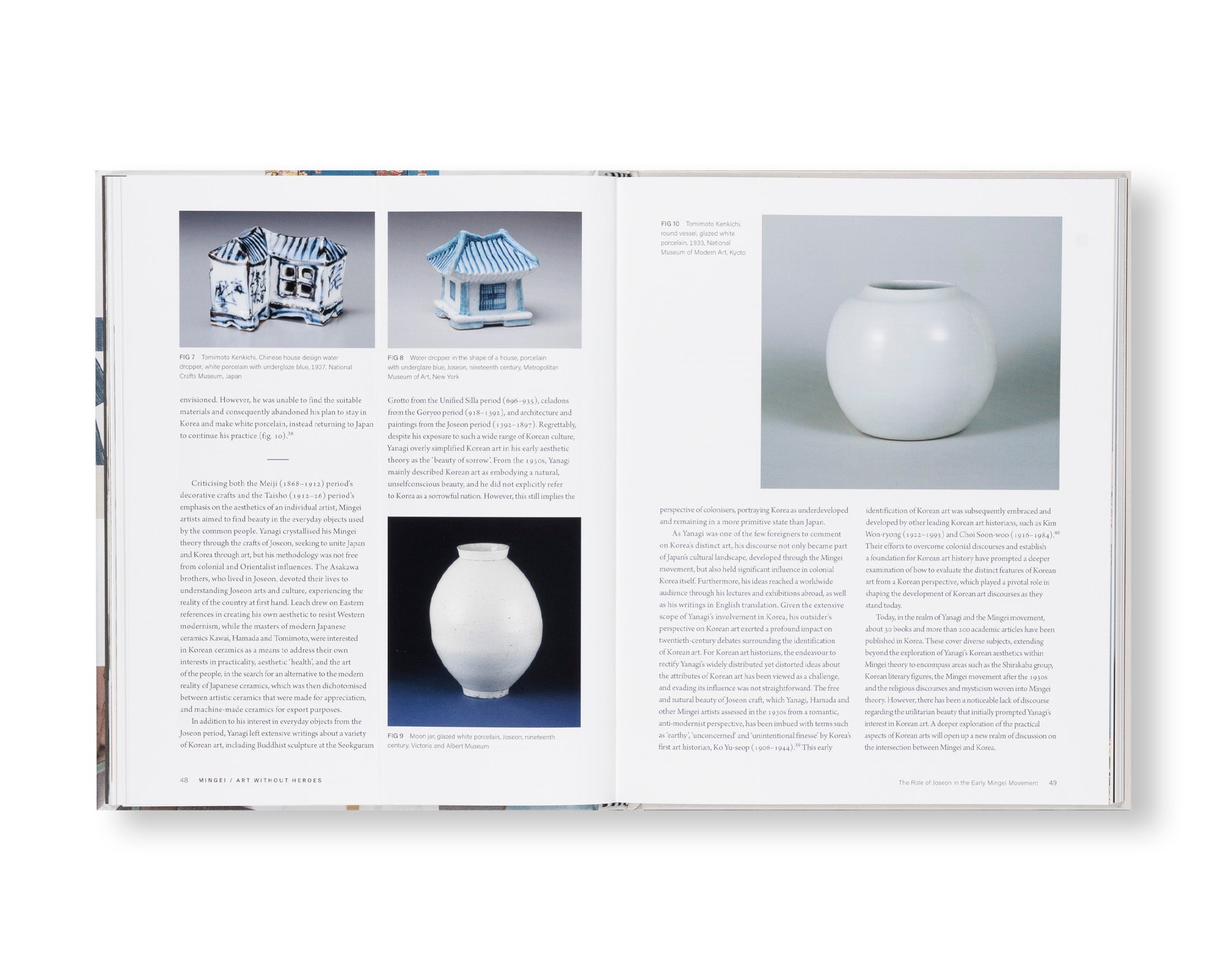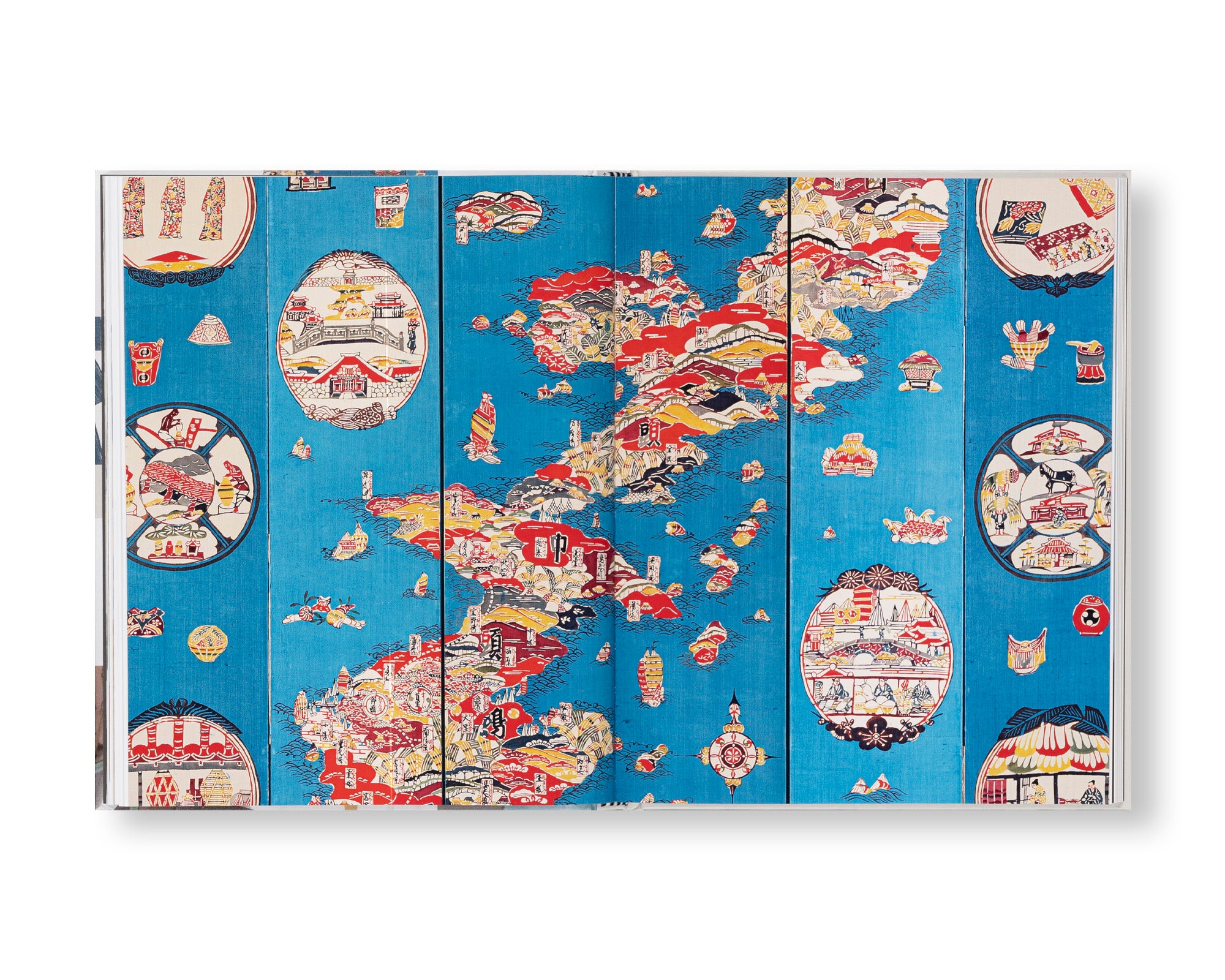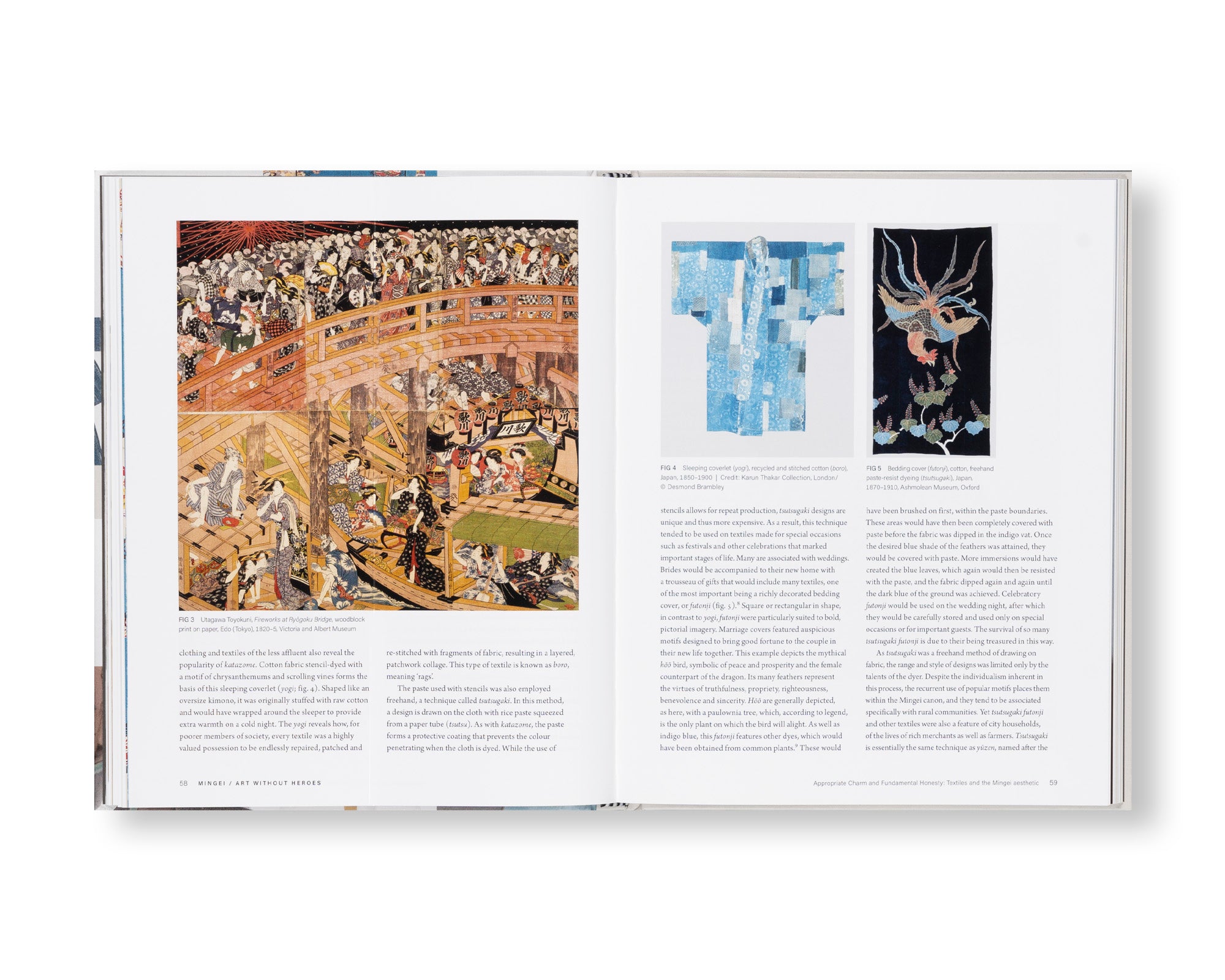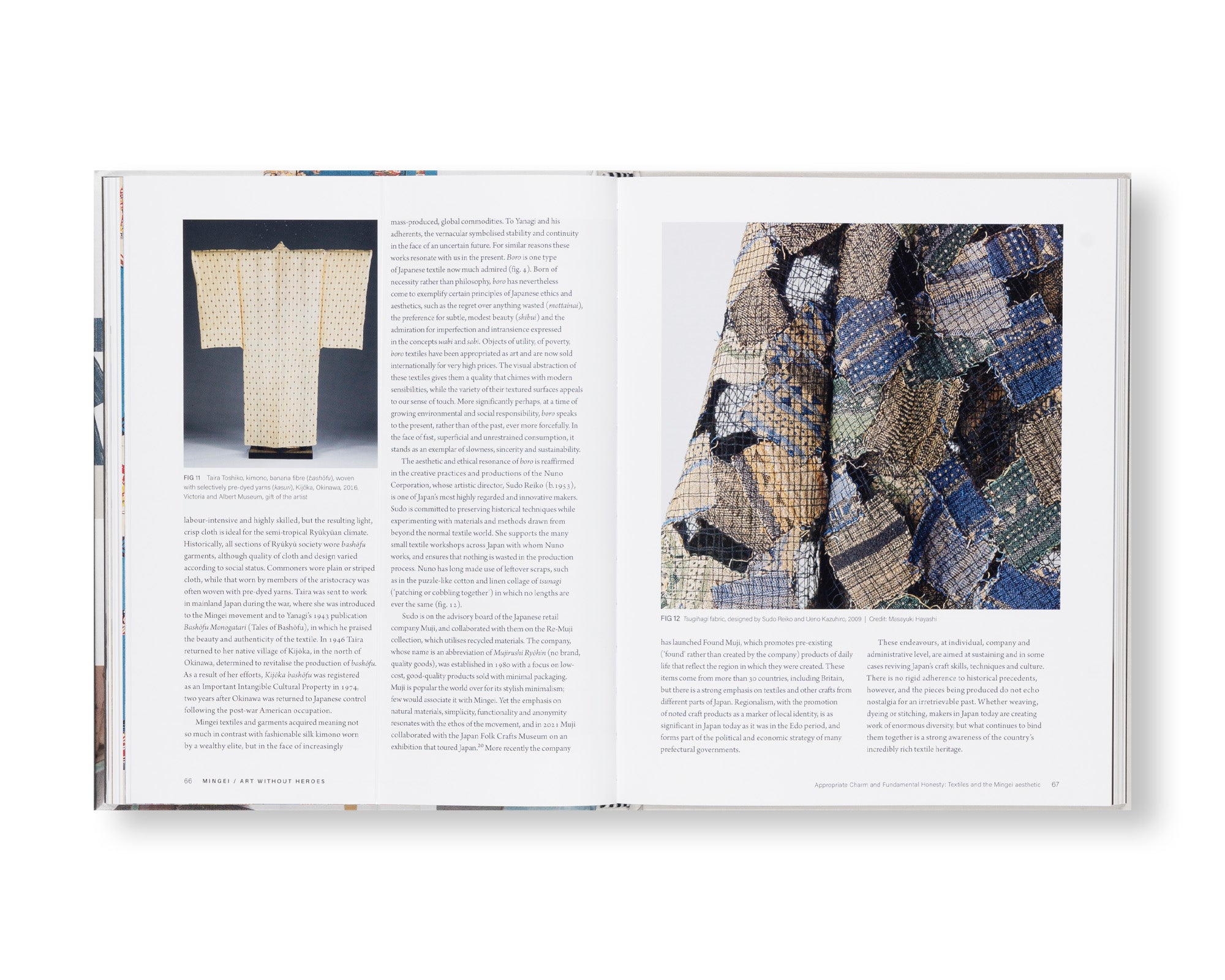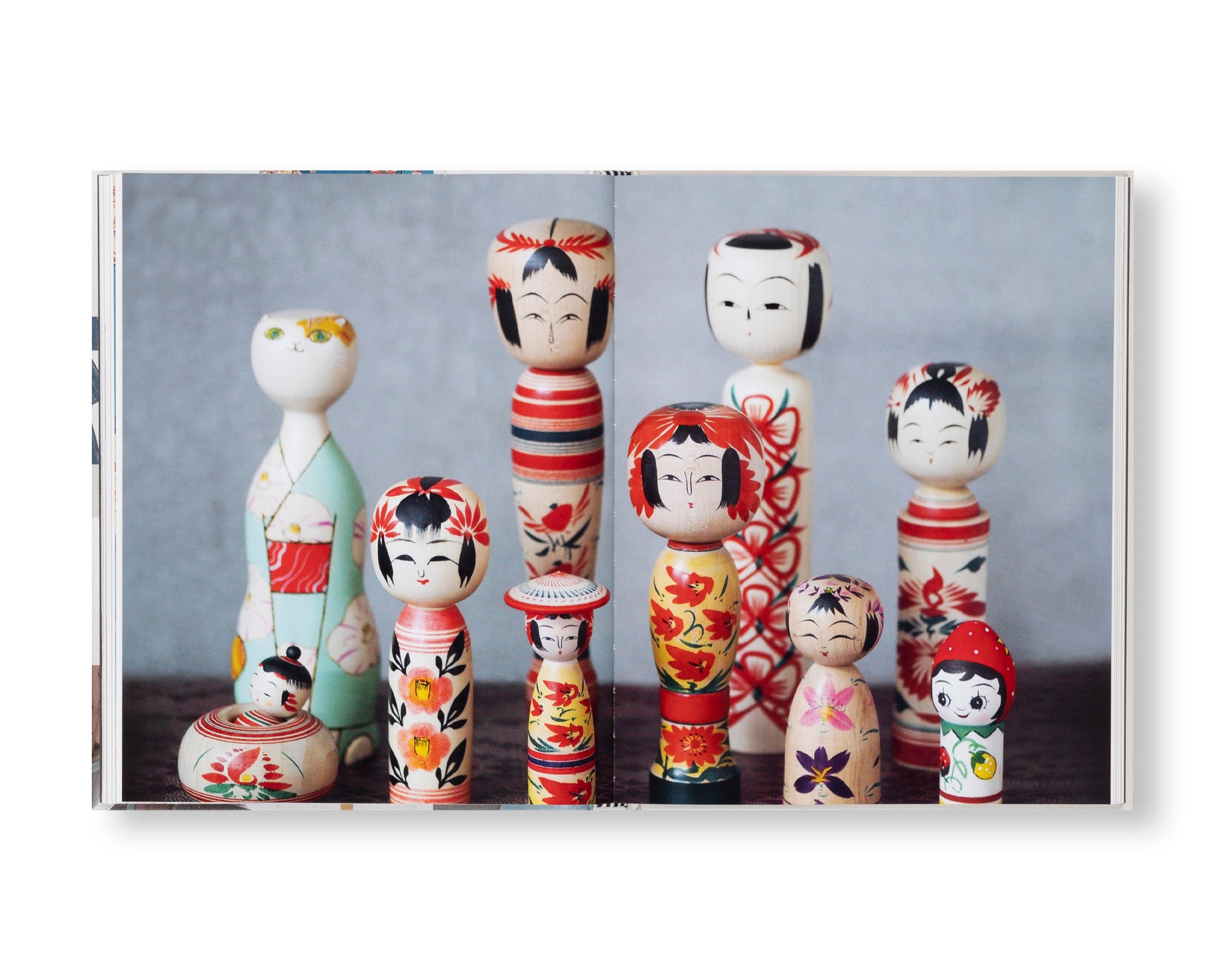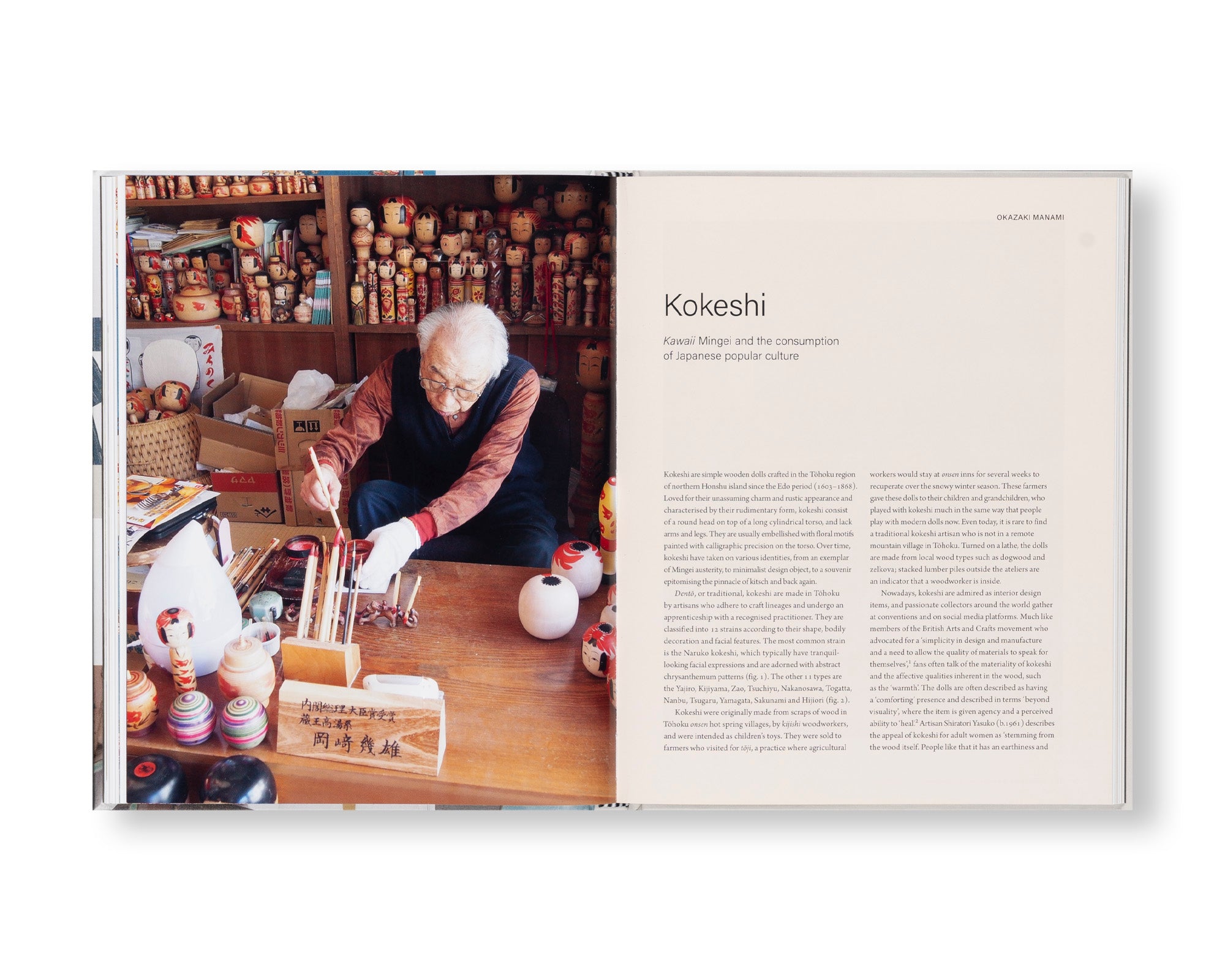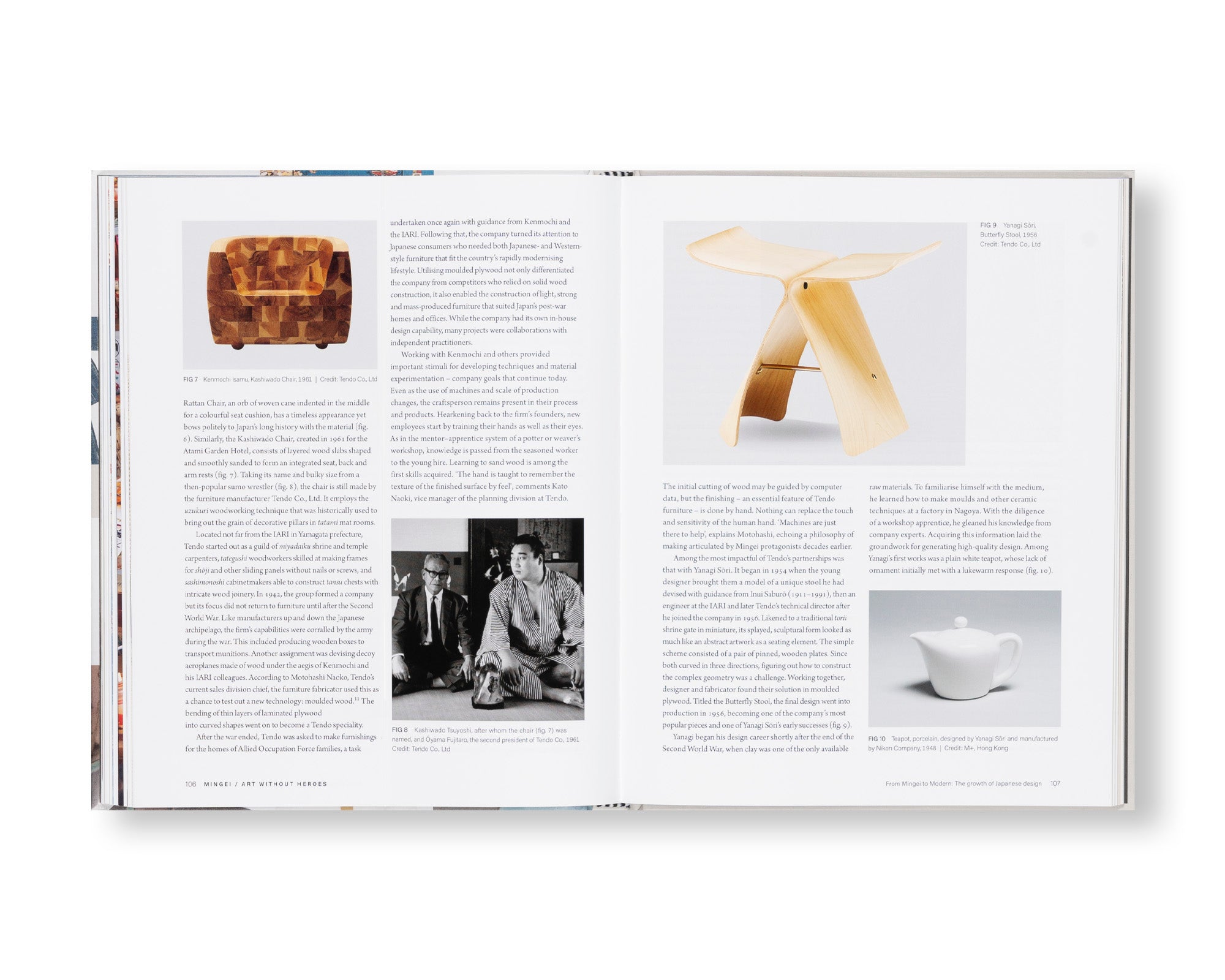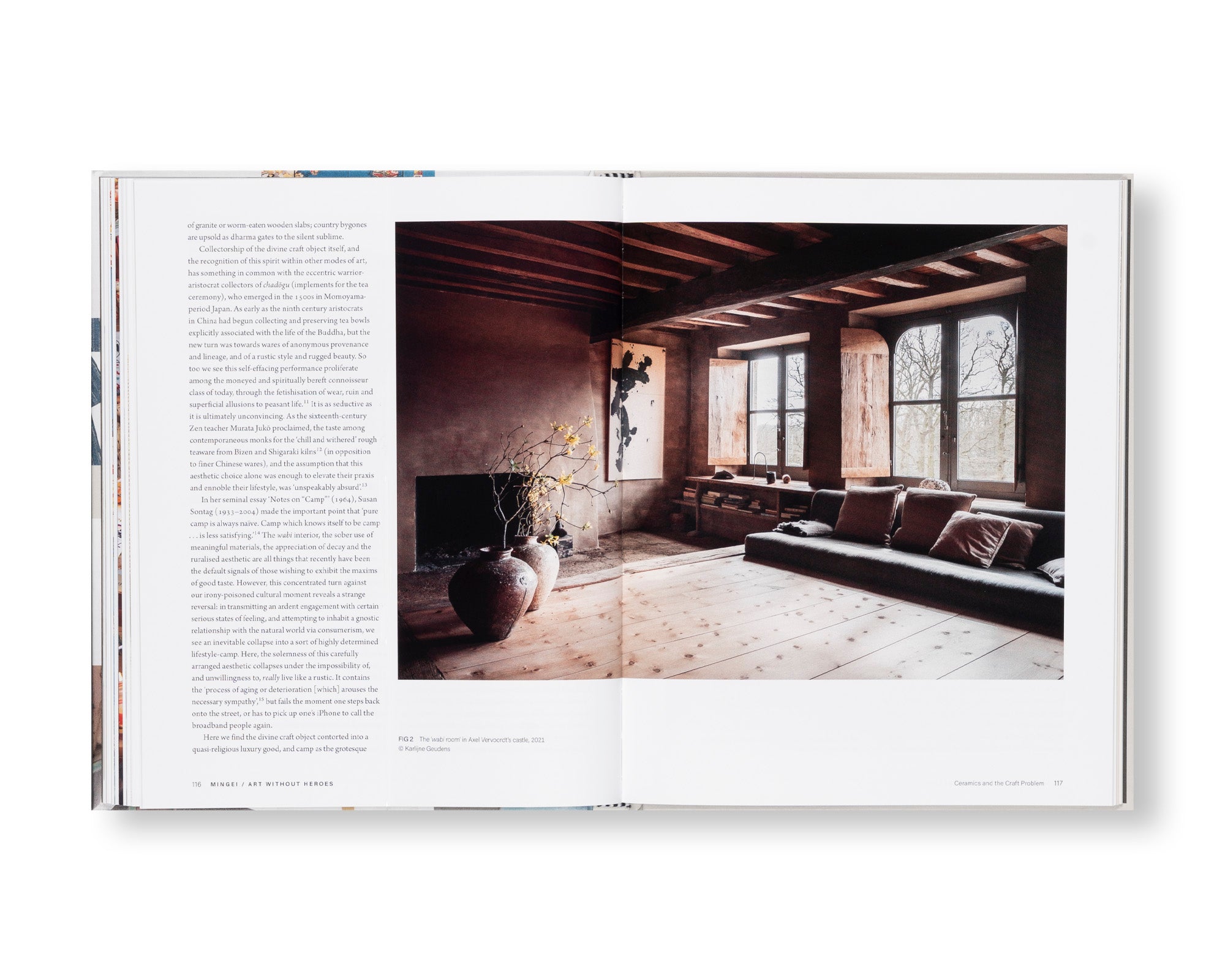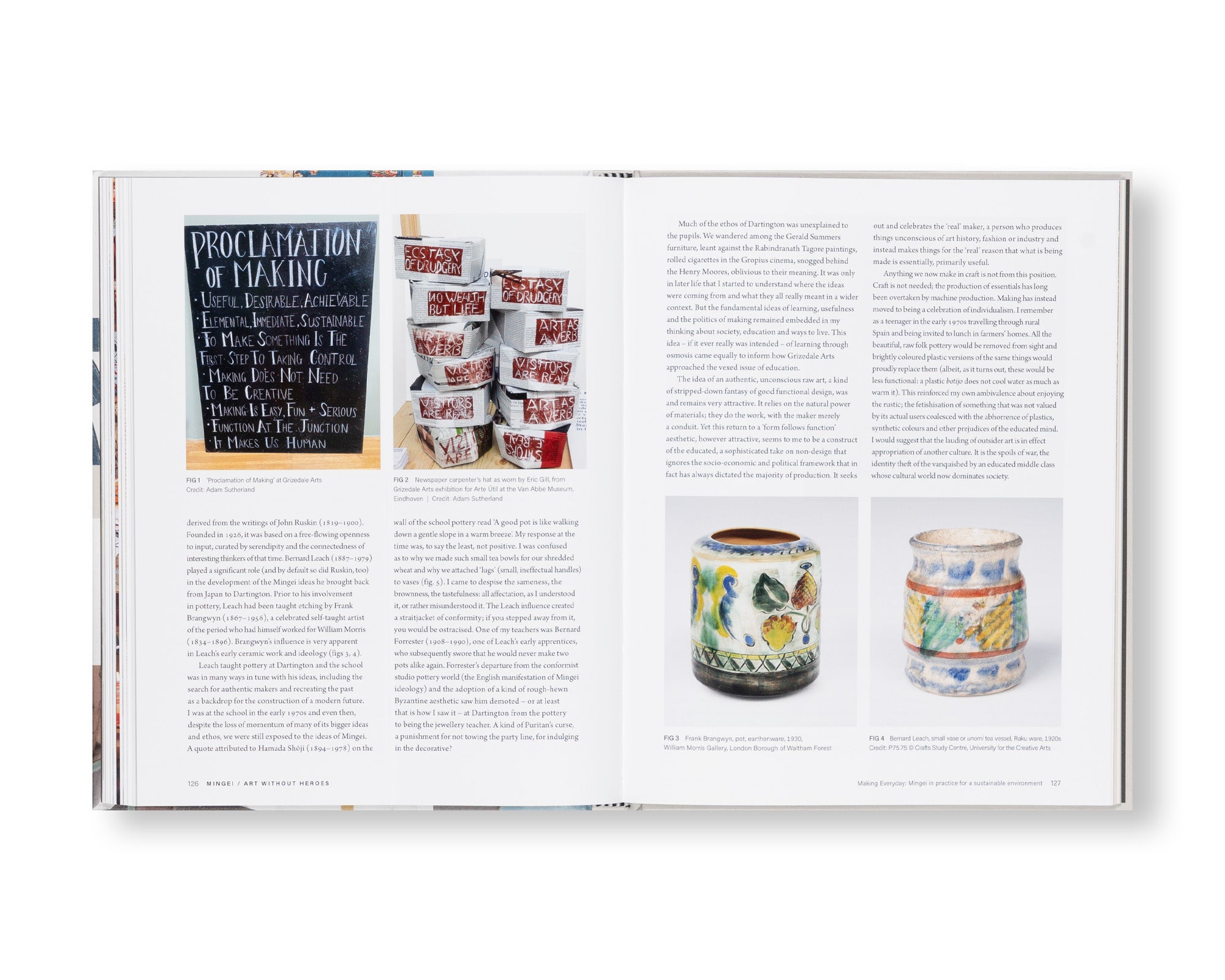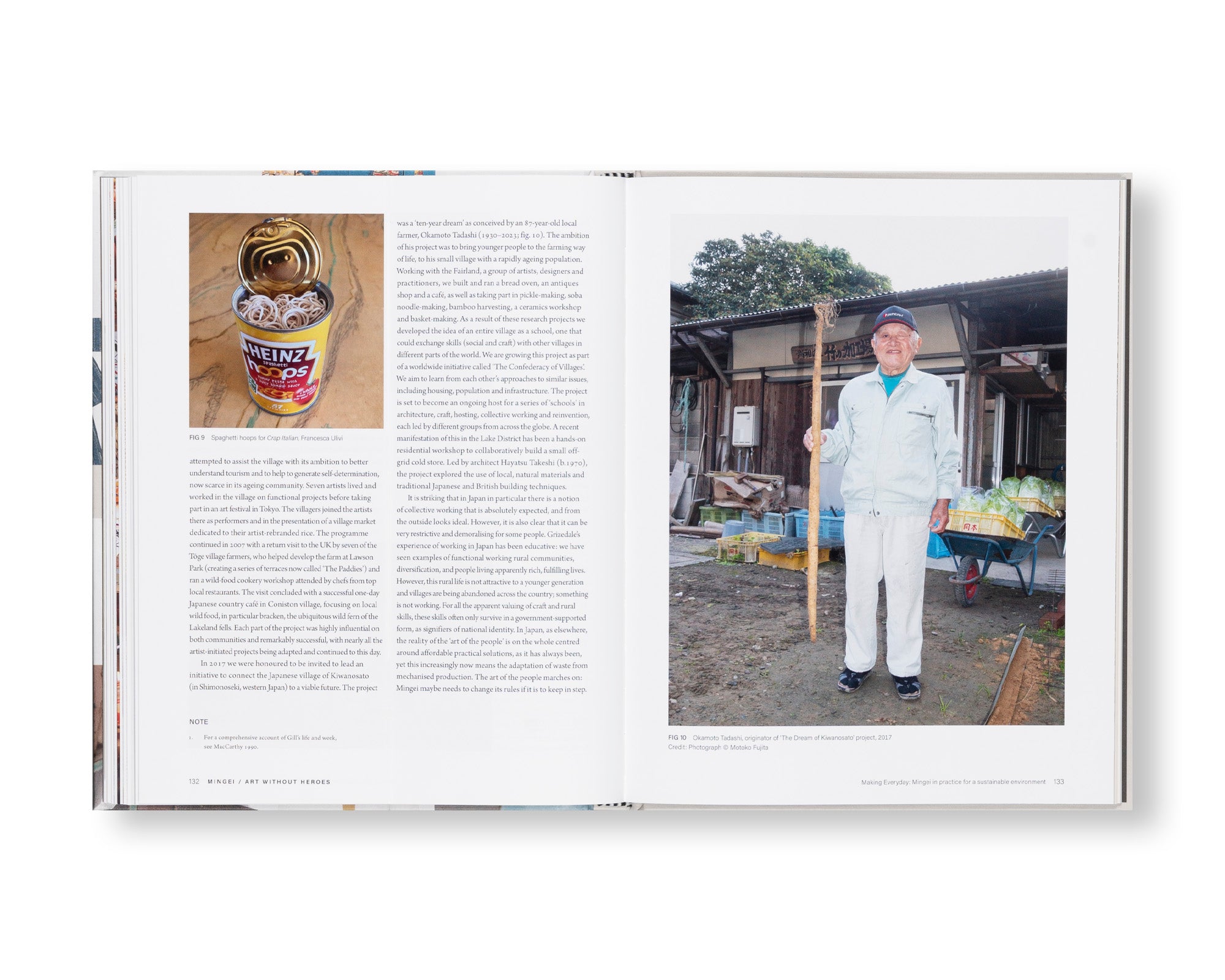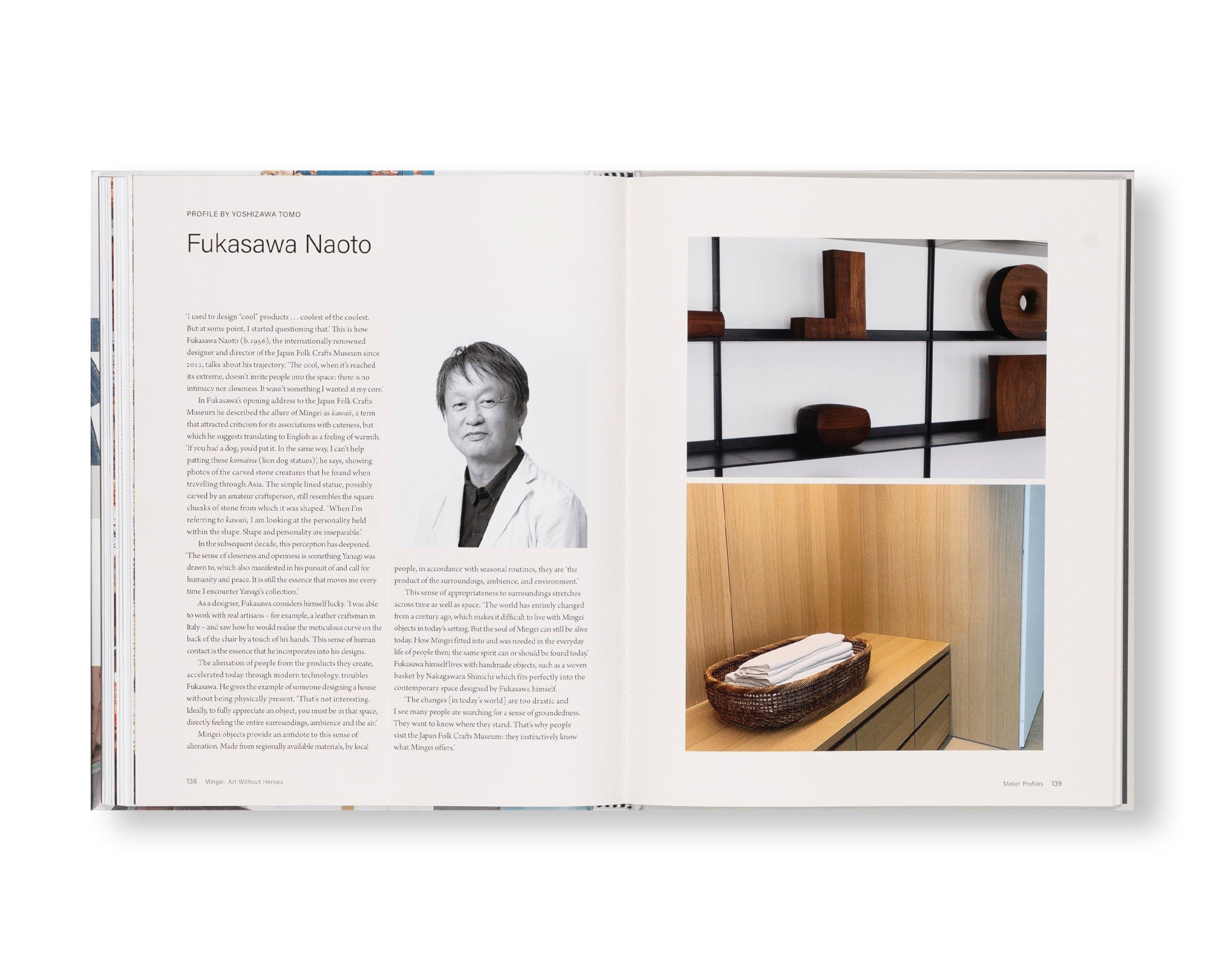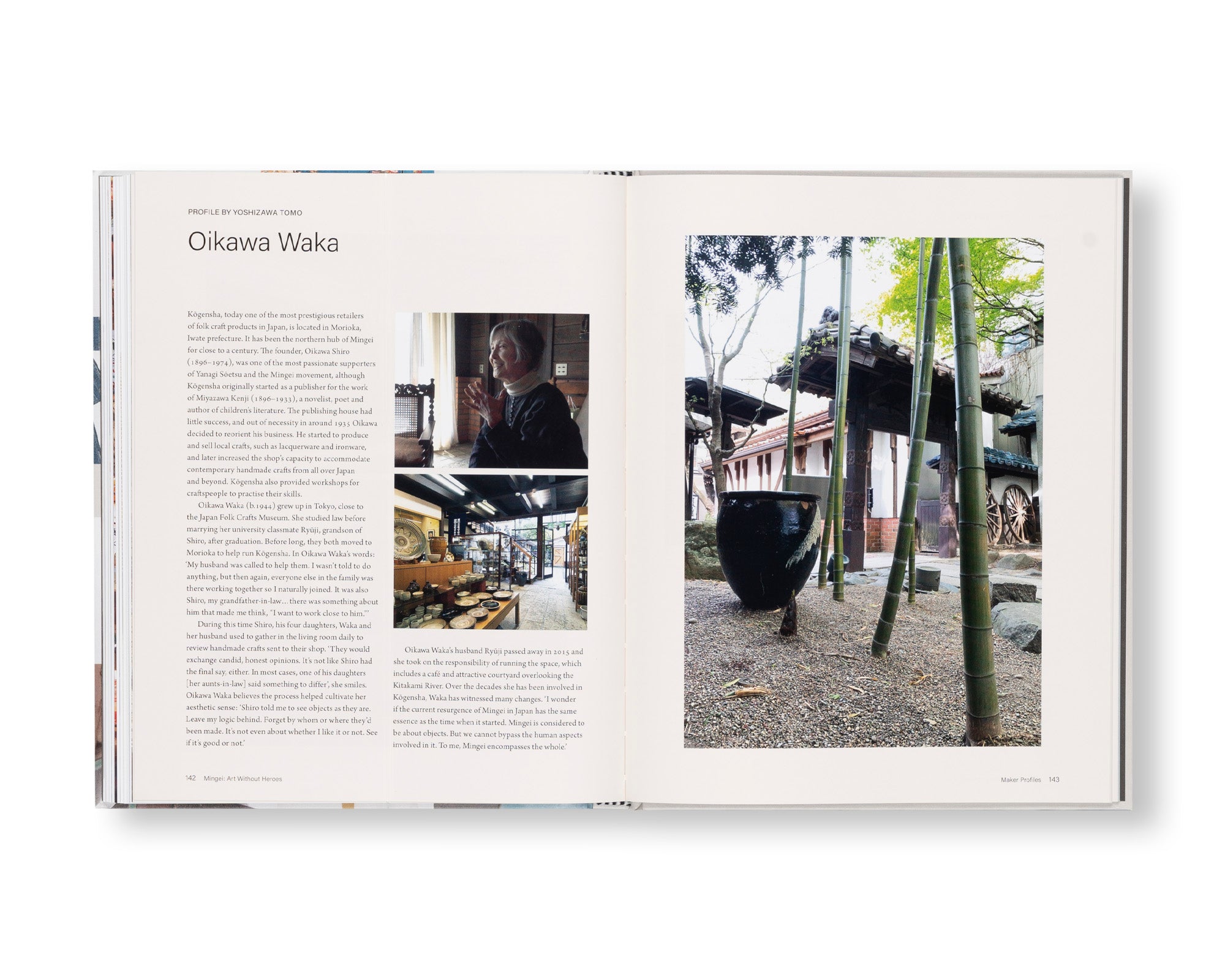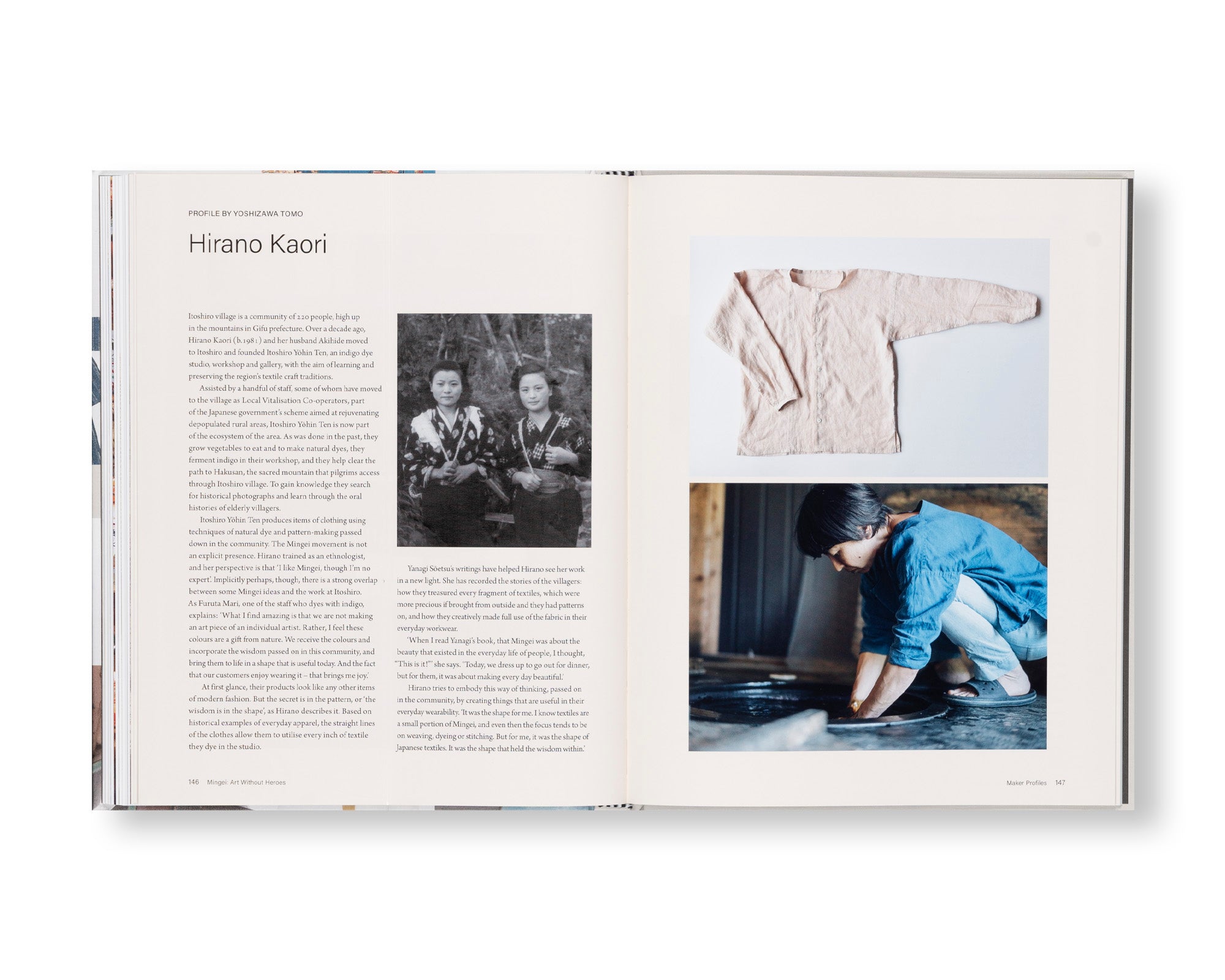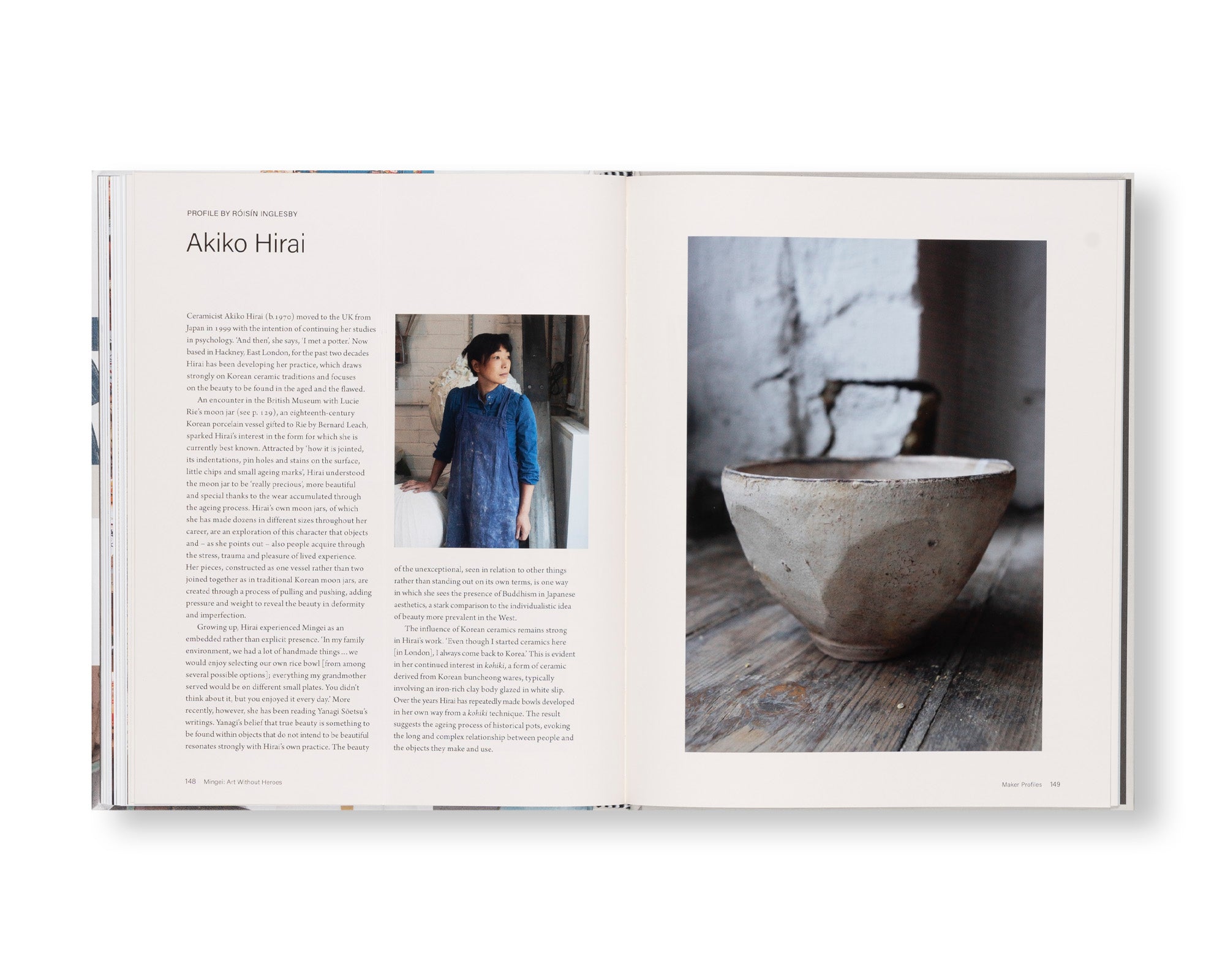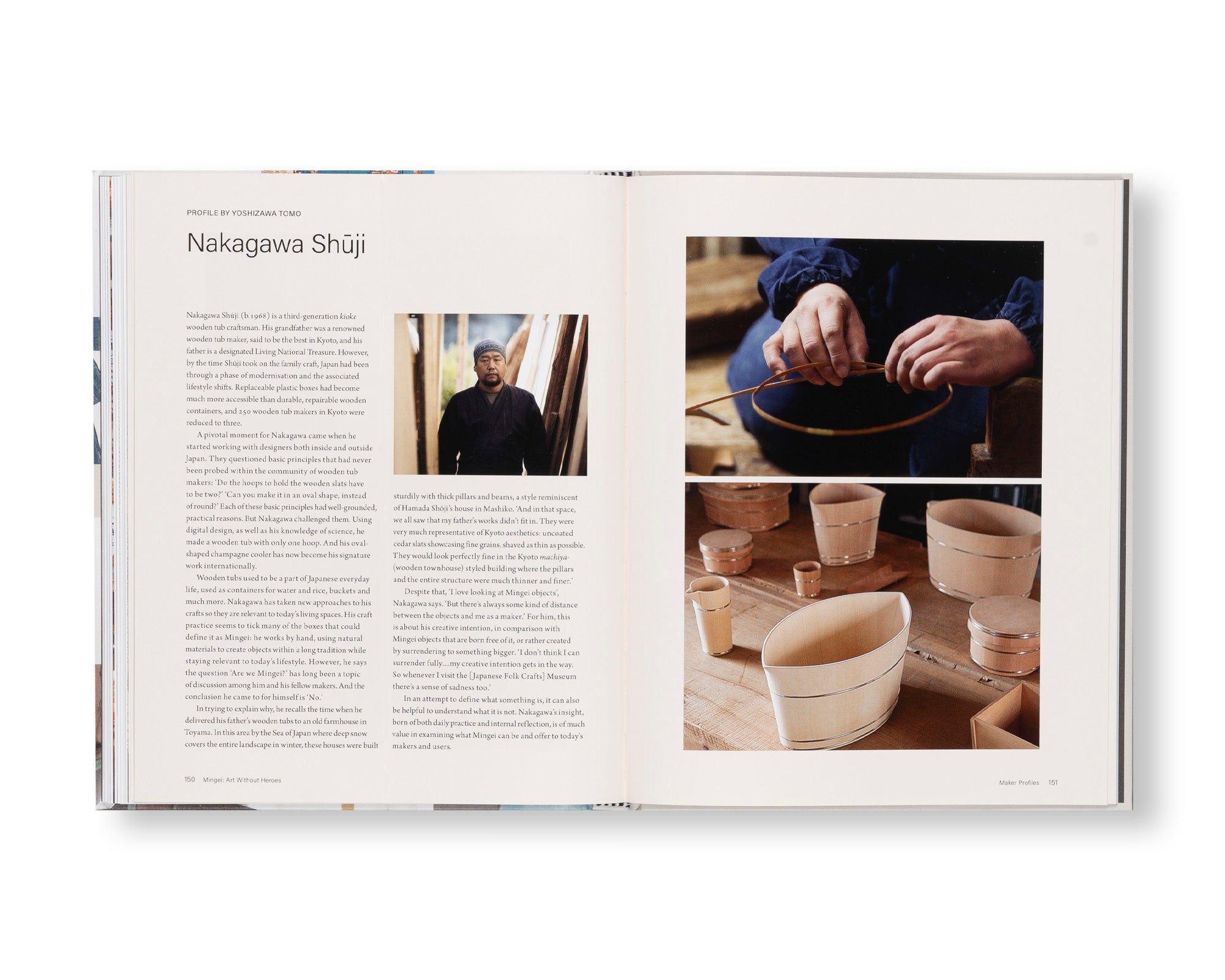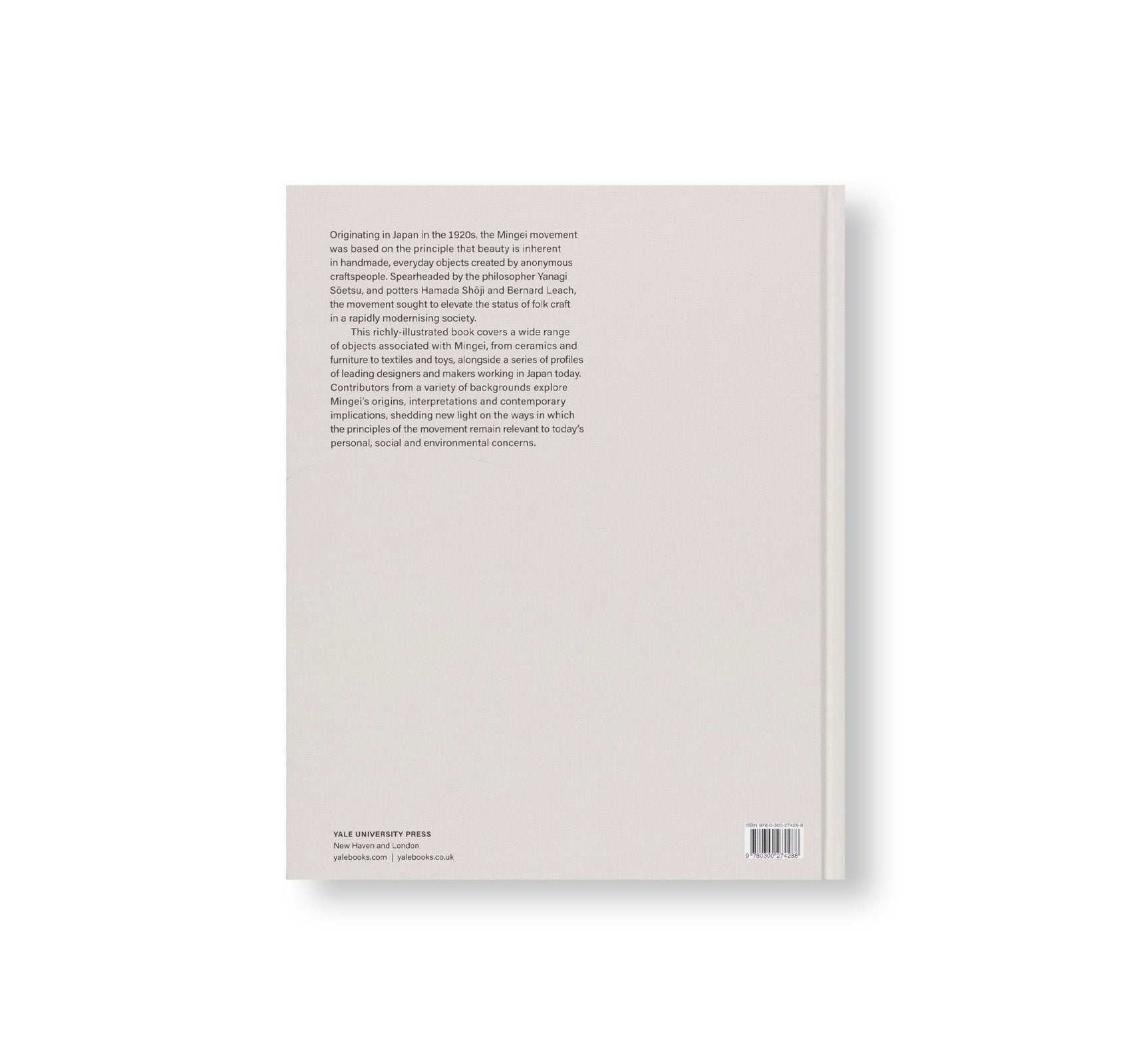MINGEI: ART WITHOUT HEROS
1920年代の日本において提唱された「民藝運動」の変遷を今日における視点から探る作品集。本書は、2024年3月から9月にかけてロンドンの「ウィリアム・モリス・ギャラリー(William Morris Gallery)」で開催された展覧会に伴い刊行された。
当時華美な装飾を施した作品が多かった工芸界の中で、この「民藝運動」は、名も無きの職人たちの手によって創られた生活道具にこそ本来備わるべき美が宿っているという理念に基づいていたものであった。
民藝運動の主唱者であり、美術評論家、宗教哲学者、思想家であった柳宗悦、陶芸家の濱田庄司、香港生まれのイギリス人陶芸家であるバーナード・リーチ(Bernard Leach)らが中心となり、急速に近代化、工業化が進み大量生産の製品が浸透してきた世の中で、安易に西洋化していくのではなく、民藝が持つ健全な美、その美の価値観を提示し、その地位を高めようと試みた。
本書は、陶磁器、家具、テキスタイル、玩具に至るまで、民藝に関連する幅広い品々を豊富な図版で紹介するとともに、今日本の第一線で活躍するデザイナーやメーカーのプロフィールも紹介する。寄稿者陣は様々なバックグラウンドを持ちながら、民藝の起源、解釈、現代における影響を探求し、民藝運動の原理が今日の個人的、社会的、環境的関心とどのように連なっているか、新たな光を当てている。
An exploration of the evolution of the Japanese Mingei (folk art) movement within the context of today’s concerns
Originating in Japan in the 1920s, the Mingei movement was based on the principle that beauty is inherent in handmade, everyday objects created by anonymous craftspeople. Spearheaded by the philosopher Yanagi Sōetsu, and potters Hamada Shōji and Bernard Leach, the movement sought to elevate the status of folk craft in a rapidly modernising society.
This richly-illustrated book covers a wide range of objects associated with Mingei, from ceramics and furniture to textiles and toys, alongside a series of profiles of leading designers and makers working in Japan today. Contributors from a variety of backgrounds explore Mingei’s origins, interpretations and contemporary implications, shedding new light on the ways in which the principles of the movement remain relevant to today’s personal, social and environmental concerns.
